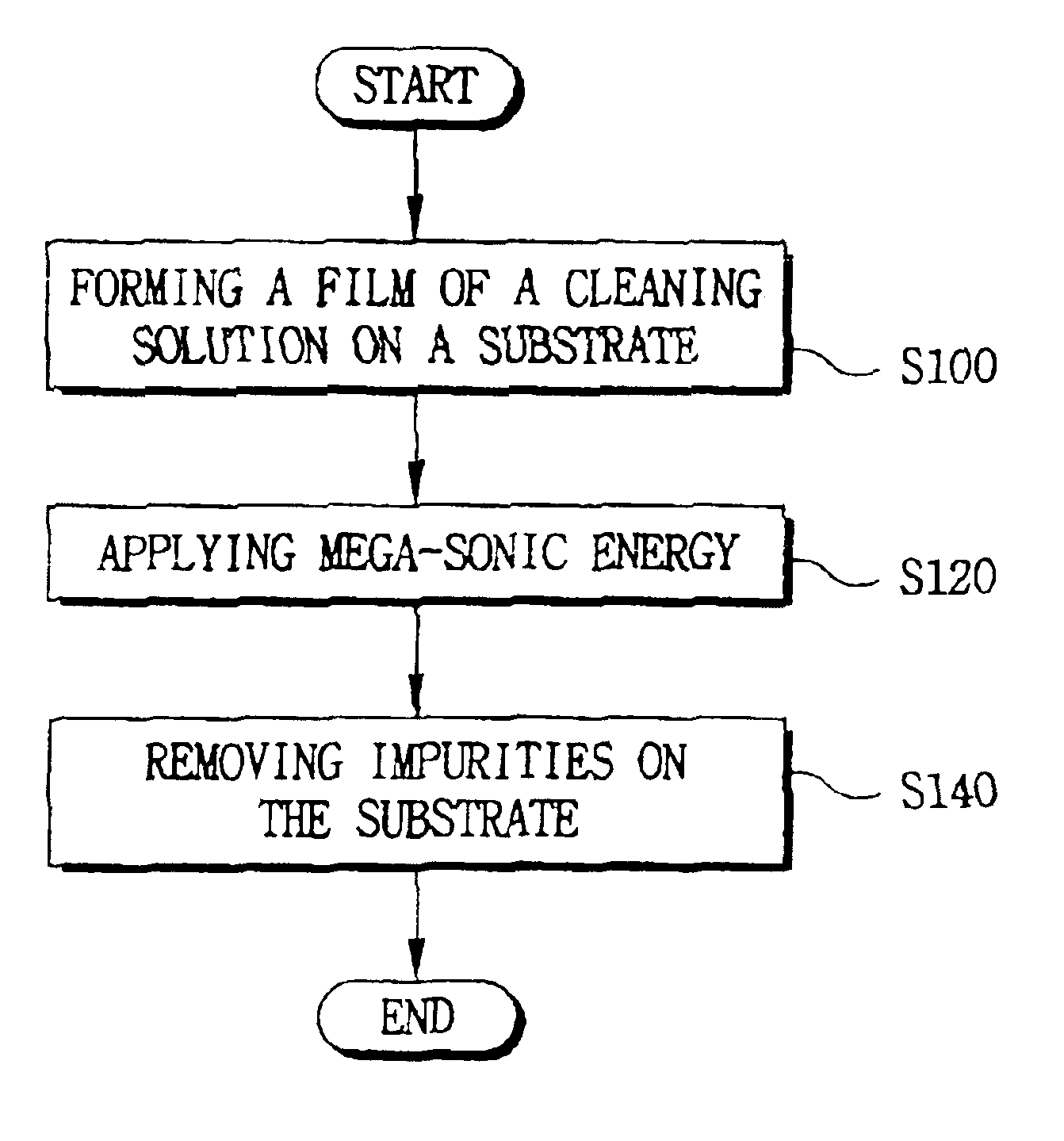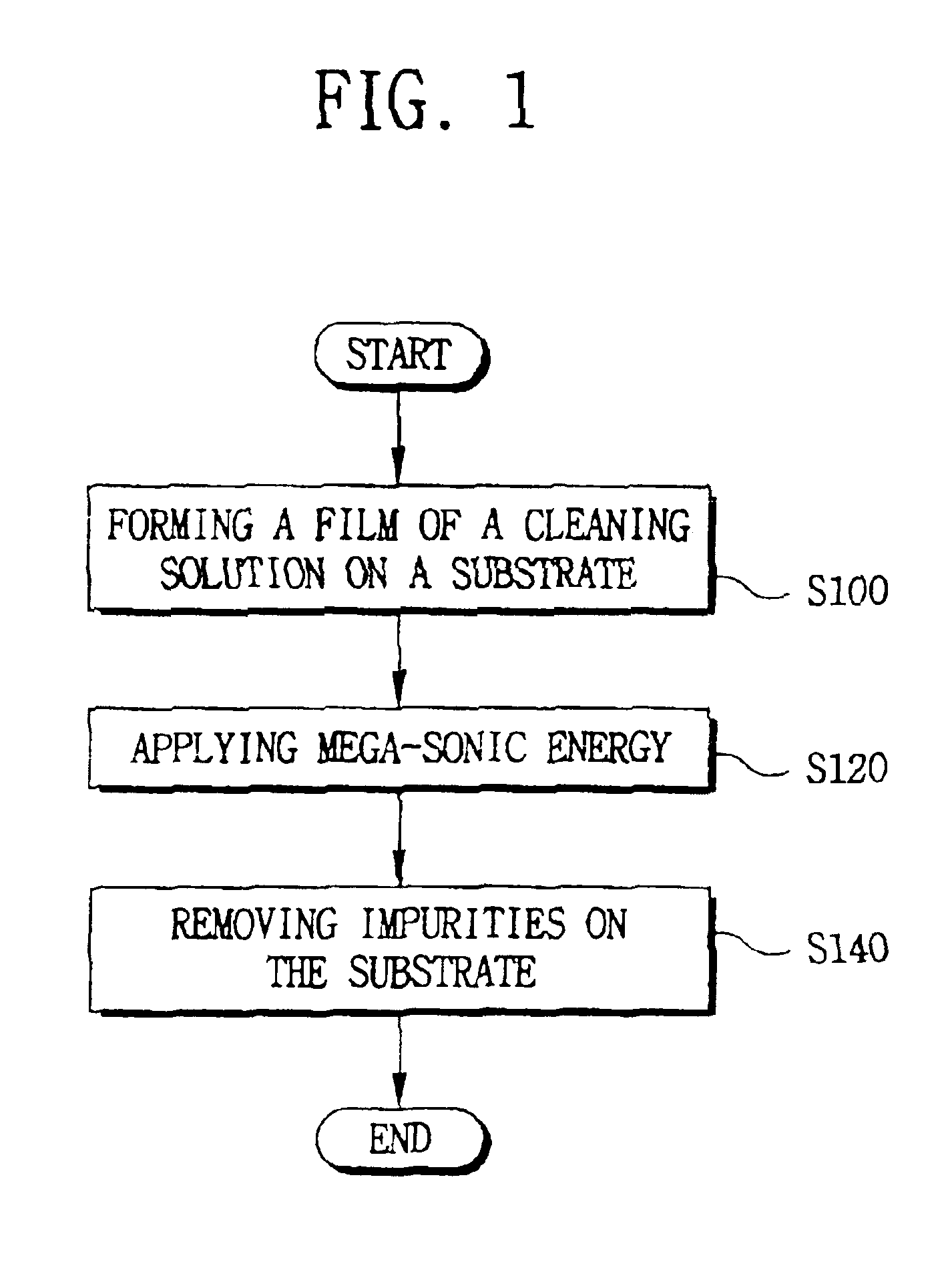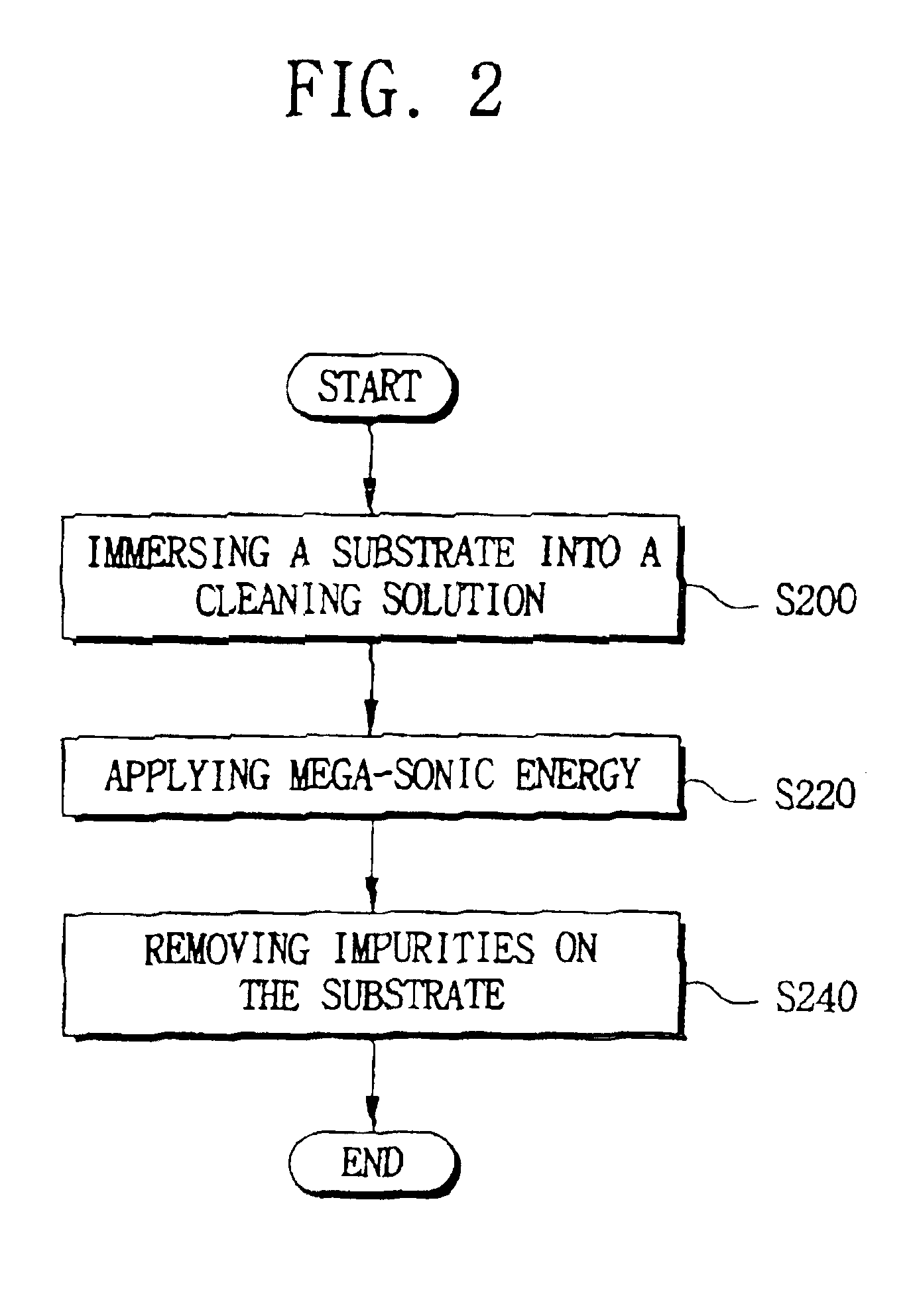Cleaning solution including aqueous ammonia solution, acetic acid and deionized water for integrated circuit devices and methods of cleaning integrated circuit devices using the same
- Summary
- Abstract
- Description
- Claims
- Application Information
AI Technical Summary
Benefits of technology
Problems solved by technology
Method used
Image
Examples
example 1
[0037]A cleaning solution including about 30% aqueous ammonia solution, acetic acid and deionized water was prepared. A volume ratio among the about 30% aqueous ammonia solution, the acetic acid and the deionized water was about 1:2:2,000. The cleaning solution was provided onto an integrated circuit substrate including exposed aluminum patterns while the integrated circuit substrate was rotated by a speed of about 20 rpm. At that time, the cleaning solution had a thickness of about 2 mm on the integrated circuit substrate. The cleaning solution was provided at a room temperature for about 30 seconds.
example 2
[0038]A cleaning solution including about 30% aqueous ammonia solution, acetic acid and deionized water was prepared. A volume ratio among the about 30% aqueous ammonia solution, the acetic acid and the deionized water was about 1:2:4,000. The cleaning solution was provided onto an integrated circuit substrate including exposed aluminum patterns while the integrated circuit substrate was rotated at a speed of about 20 rpm. At that time, the cleaning solution had a thickness of about 2 mm on the integrated circuit substrate. The cleaning solution was provided at a room temperature for about 30 seconds.
example 3
[0039]A cleaning solution including about 30% aqueous ammonia solution, acetic acid and deionized water was prepared. A volume ratio among the about 30% aqueous ammonia solution, the acetic acid and the deionized water was about 1:1:1,000. The cleaning solution was provided onto an integrated circuit substrate including exposed aluminum patterns while the integrated circuit substrate was rotated by a speed of about 20 rpm. At that time, the cleaning solution had a thickness of about 2 mm on the integrated circuit substrate. The cleaning solution was provided at a room temperature for about 30 seconds.
PUM
| Property | Measurement | Unit |
|---|---|---|
| Fraction | aaaaa | aaaaa |
| Thickness | aaaaa | aaaaa |
| Power | aaaaa | aaaaa |
Abstract
Description
Claims
Application Information
 Login to View More
Login to View More - R&D
- Intellectual Property
- Life Sciences
- Materials
- Tech Scout
- Unparalleled Data Quality
- Higher Quality Content
- 60% Fewer Hallucinations
Browse by: Latest US Patents, China's latest patents, Technical Efficacy Thesaurus, Application Domain, Technology Topic, Popular Technical Reports.
© 2025 PatSnap. All rights reserved.Legal|Privacy policy|Modern Slavery Act Transparency Statement|Sitemap|About US| Contact US: help@patsnap.com



